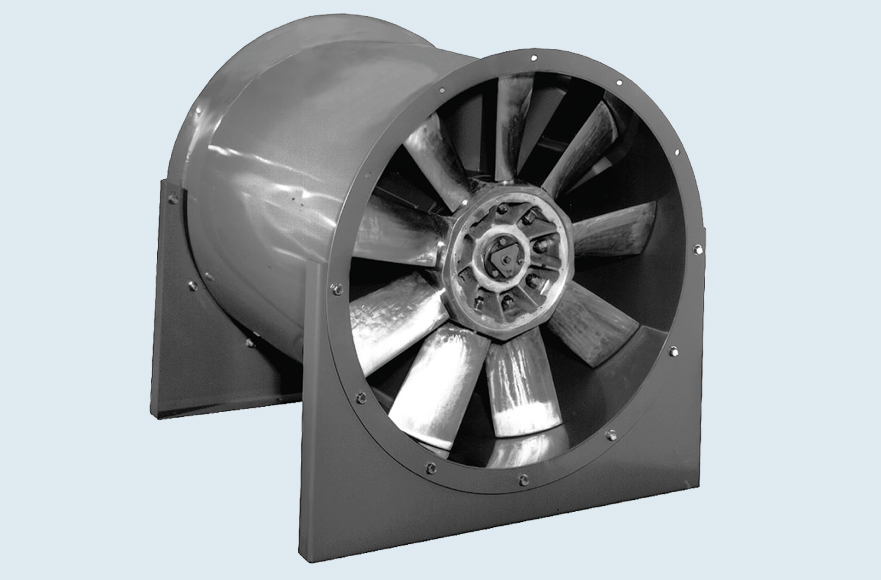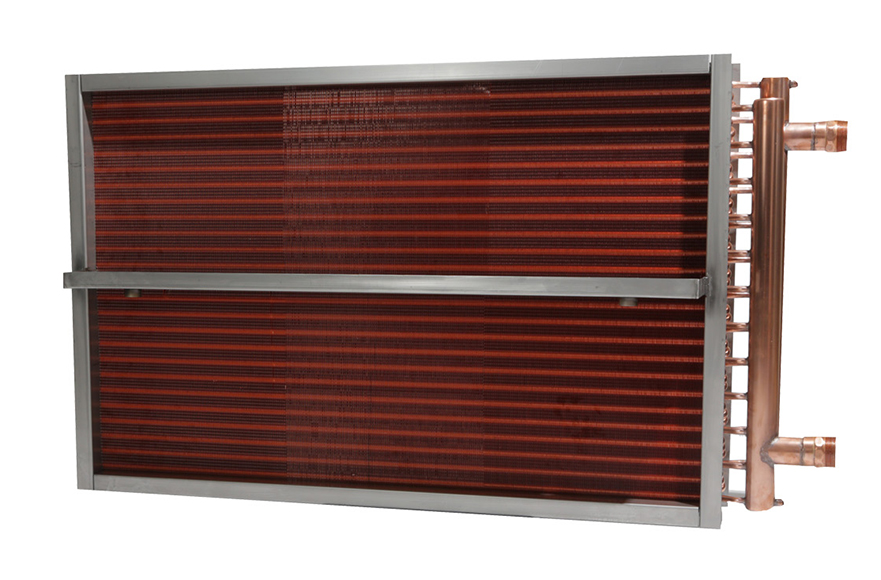Answers to Your Coil System Problems

Periodically, we receive questions from our customers on coil system products. The following are a few answers to questions from the recent past that may prove helpful.
We have a system in a local hospital with old vane-axial controllable pitch fans. These fans blow through a bank of chilled water coils. The system has always had water in the duct downstream of the cooling coils, but it’s getting progressively worse. This system is almost 25 years old. What can we do about the problem?
Sam – Contractor – San Diego, CA
Answer: You are not alone regarding problems with these controllable pitch vane-axial systems that were very prominent in the 80’s and 90’s. We don’t see them anymore because of the advent of VFD technology. Water carryover has always been a common problem with these systems, and most of it can be traced back to the original design.
Let me explain. The outlet velocity of these fans is very high and is delivered downstream in a spiral manner. There must be a designated space between the fan outlets and the entering face of the cooling coils. There also needs to be a diffuser that breaks up the air, slows it down and allows for a more uniform distribution across the coil face. Many systems fall far below the standards required for proper distribution. Because of this, the systems either have an air velocity above 550 feet per minute (FPM) – the threshold where water carry over starts – or have local velocity way above that figure. Local meaning there would be areas along the face of the coil that have drastically higher velocity than other areas. That’s why your system has had problems with water carryover since its inception.
The water carryover has increased because higher velocities are present. Being almost 25 years old, it’s almost guaranteed that the chilled water coils are fouled, and the water carryover is exasperated by foreign material in the core of the coils that has created pockets of different resistance. Air moves through the path of least resistance (wherever the dirt or debris isn’t lodged) creating even higher local velocities and with that more water carryover.
The only solutions are: 1) try and clean these coils and remove the pockets of resistance, or 2) change out the chilled water coils for new coils. If you go the change out route, it’s a good idea to look at flatter fin surfaces or reduced fins per inch that will make the new coils easier to clean.

We have a process steam heating system that has had problems with leaks in the joints near the supply/return manifold. These leaks started about a year ago and now we have multiple leaks. We have 100 PSIG steam and there are three steam coils (2 row) in the direction of air flow, and all are individually trapped. Can you help us with this problem? I talked with you personally, and you’ve stated the entering air side coil has had more problems than the 2 coils downstream.
John – Process Engineer – Reno, NV
Answer: Based on the information you’ve provided; the problem is probably stress corrosion cracking. This problem is very normal to a high-pressure steam system over an extended amount of time. There are 3 things required to create these failures. One is two row coils where the tubes are all connected to one header. The 2nd is high pressure steam, and the 3rd is a growing corrosive contaminant in the steam condensate.
Let me explain. The first coil in the direction of air flow has a lot more heat transfer than the two coils downstream. Therefore, it has more expansion and contraction. The first row of tubes expands and contracts at a different rate than the second row. This is where “stress” is prevalent. Also, over time corrosive agents build up in steam systems. This is due to the chemical cleaning treatments used. The 3 biggest ones are 1) oxygen, 2) carbon dioxide and 3) ammonia. There are dozens of others, but these 3 by far dominate the conversation. Over time, the system has enough combined corrosive agents and stress that cracks begin to appear near the tube to the header joint. Note: I say “close”, because the joint is stronger than the tube, and you will normally find these cracks are within 1/8” or ¼” along the inside of the tube near but not in the joint – inside meaning facing in the direction of air flow.
There are a few ways to deal with this problem. One would be to replace the entering air side 2 row coil with a qty of 2 – 1 row coils. This would remove the stress part of this equation. You may also have to do this with the 2nd coil in the direction of air flow. Remember – you will still have built-in corrosive agent(s) in the steam condensate that can eventually build up and destroy the coils all by itself. You could also go to an all stainless-steel coil option, which is more expensive but is very resistant to corrosive agents.
Southwest Coil exclusively represents USA Coil & Air in the Southwest Region and has 5+ decades of manufacturing knowledge and technical experience to assist you with all your coil problems. We know coils fail for specific reasons, and it’s important to find the existing issues and not blindly replace a problem with another problem. We are dedicated to giving you the best possible alternatives to achieve longevity with new coils.
I’ve always been enamored with the great John Wooden. Here are some select quotes from the Wizard of Westwood:
“Whatever you do in life, surround yourself with smart people who will argue with you.”
“If you’re not making mistakes, you aren’t doing enough. I’m positive doers make mistakes.”
“If you don’t have time to do it right, when will you have time to correct it.”


